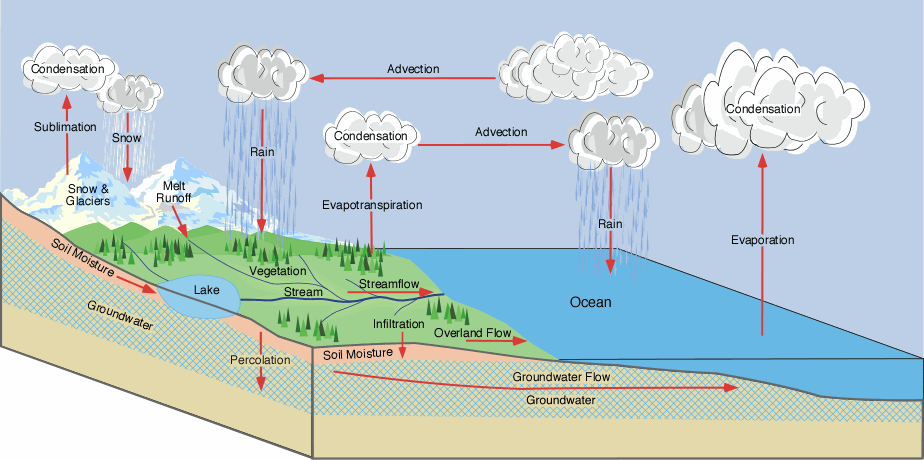Alterations in hydrology caused by climate change are complex. A simple increase in average temperature results in greater evaporation from soils, drying them out and providing less water to plants and diminished input to groundwater. Less soil water and groundwater lead to lower stream and lake levels and reduced wetland areas. Increased temperatures also mean greater evaporation from lakes and wetlands. Greater evaporation from land surfaces and water bodies, including the oceans, produces more water vapor, which translates into global precipitation increases. (Oh, good news! A few sentences ago it was looking like we were having less water enter the groundwater. Not so fast...)
Those increases, however, are not evenly distributed in time and space (geography matters!). Those places getting much more precipitation find that the increased precipitation offsets the greater evaporation from land and water surfaces; these places are wetter. Those places seeing only a modest increase in precipitation or no increase at all find that increased evaporation rates overshadow precipitation and total available water decreases. Finally, in combination with increased evaporation, those places receiving less precipitation are much drier than before climate change.

These combinations of factors become even more complex if the seasonality of precipitation changes. Some places are becoming wetter in some seasons and drier in others, and the impact of those changes on hydrology is a function of which season is becoming wetter and which one is becoming drier, of the timing of those changes in the annual water cycle, and of the type of precipitation that falls. For example, some mountainous regions are finding that the first snowfall in autumn is coming later and the last snowfall in spring is coming earlier. This change means that the snowfall season is much shorter and snowpacks are much thinner on average. Not only does that change result in less water in the snowpack, but also it causes the release of that water with spring melt to come earlier and to have a significantly smaller peak flow in streams. Regions that rely on mountain snowpacks for their water supply watch these changes with growing alarm. This feels a bit confusing; let's walk through this more carefully with The Importance of Mountain Snowpack to Water Resources. I like this brief write-up because it talks about a few specific regions in the US and what this means for each of them.
